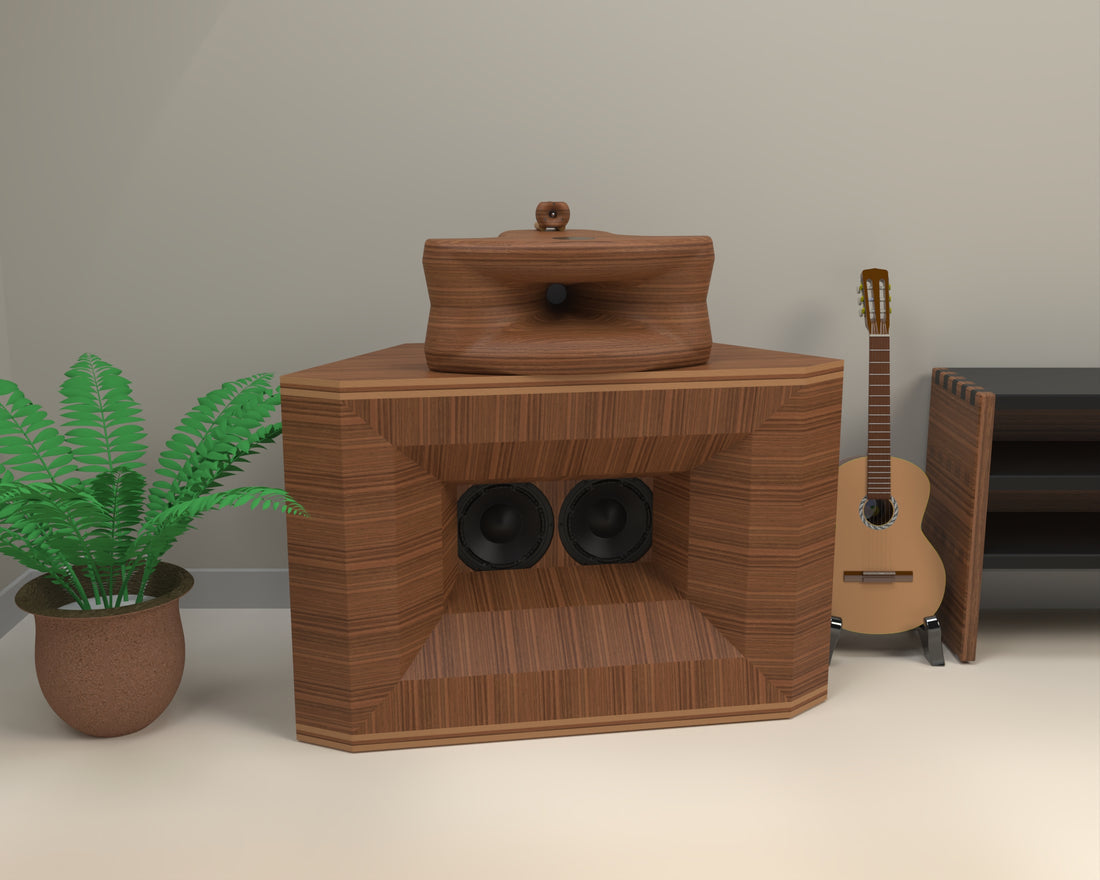
In this blog post I look at a potential new bass cabinet that utilizes Purifi's new 10" woofer.
Following on the heals of my latest test on the 8" version driver, it only made sense to look at using the new 10" version for a potential upcoming project.

Why Purifi?
The Purifi 8" exceeds the distortion performance even against the best measuring 15" woofers I've tested. Below is a comparison on dynamic range when using a complex 12 band/octave test signal.

Displaying those same results graphically we get the following.

The new 10" version will offer even lower distortion. I recall discussing the new 10" with Lars Risbo while I was at High End Munich and he explained how they were having difficulty with the new 10" since the distortion was into the noise floor of the their test equipment!
And what better way to improve a potentially great woofer than to use two drivers per cabinet! My brain had visions of a wide body version of the 1798 cabinet using dual 10" flanked horizontally, I mean, who doesn't love a wide body version? To take things a step further, why not use the passive radiators offered by Purifi? It was found during my testing of the 8" that my 3" flared port introduced some coloration in the 550Hz region as you can see below.

Using the passive radiators will eliminate this issue.
Additionally, the removal of the slot ports lowers the overall cabinet height bringing the listening height to a more optimal level.

The passive radiators easily fit on the side panels as shown below.



I am still working on getting my renders to look as good as the finished product.


The rectangle throat shape will help with any potential resonances in the throat by creating different distances between the horizontal and vertical walls. The throat has simply been widened compared to the original 1798 cabinet, making cut angles and sizes very similar. This makes the horn mouth area 50% larger allowing for future potential of 18" or even 21" drivers. The driver mounting plate is removable to accommodate such changes.

Cabinet Tuning
The Purifi site spells out their own recommended cabinet volumes and tuning frequencies for optimal performance. This takes the guess work out considerably.
Cabinet tuning is 26Hz which is lower than the original 1798 cabinet at 33Hz. Sensitivity is reduced however going from 98dB down to 90dB @1w. The option of wiring the drivers in series or parallel are shown below.
Sensitivity (2.83v)
Series Wiring: 88.4dB@1w(2.83v) with a 10ohm Re at 100Hz
Parallel Wiring: 94.5dB@1w(2.83v) with a 2.8ohm Re at 100Hz
Sensitivity (1w)
Series Wiring: 89.1dB@1w(2.83v) with a 10ohm Re at 100Hz
Parallel Wiring: 89.1dB@1w(2.83v) with a 2.8ohm Re at 100Hz
Physical Size
Below is a drawing showing the overall dimensions. The listening height has been reduced from 1104mm to 1028mm at the midrange horn which covers from 500Hz to 10kHz.



Maximum Output SPL
The 10" Purifi has a very high xmax of 14.8mm one way. 500 watts is required to reach this xmax which produces 116dB SPL at 1m for a single bass cabinet, even down to the 26Hz F3.
When comparing the output SPL against the Beyma 15LX60V2 we get the following comparison.
Max Output (bandwidth limited to 45Hz)
Dual 10" Purifi: 118dB SPL 1m
Single 15" Beyma: 122dB SPL 1m
Max Output (bandwidth limited to 24Hz)
Dual 10" Purifi: 116dB
Single 15" Beyma: 115dB SPL 1m
So we can see that the dual 10" Purifi offers similar maximum output capability but with the added benefit of deeper bass extension.
Horn Loading
In my review of the 8" Purifi woofer I explained how the 1798 front horn bass cabinet offered a more visceral listening experience by virtue of the front horn's ability to project the sound wave towards the listener in a controlled manner in terms of off-axis behavior. This aspect is hard to quantify objectively, however it remains a strong factor for the rationale for the new 1799 design. When the bass hits you want the accompanying mid-bass and mid-range to hit with similar impact, and the front horn goes a long ways towards improving this subjective experience which is felt more than heard. The wider horn will also improve this aspect by providing pattern control a little lower into the frequency band. As with the 1798 off-axis polar map shown below, the pattern control should be improved from what I measured early.(see green arrows)

Customer Photos
Below are a customer's photos sent to me after getting his 1798 cabinets setup. The walnut provides a rich appearance similar to the Tannoy Westminster.

The wider design would appear as follows as system.
Current Status (Sept 1,2023)
Currently I am awaiting an order of birch plywood and that includes the real walnut veneer pre-applied from the factory. This wood will arrive in one week. I am leaning heavily towards building the 1799 design. If you are interested in the design for your own system please contact me at joseph_crowe@josephcrowe.com








